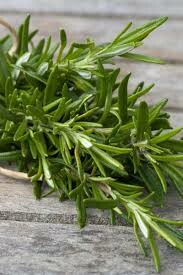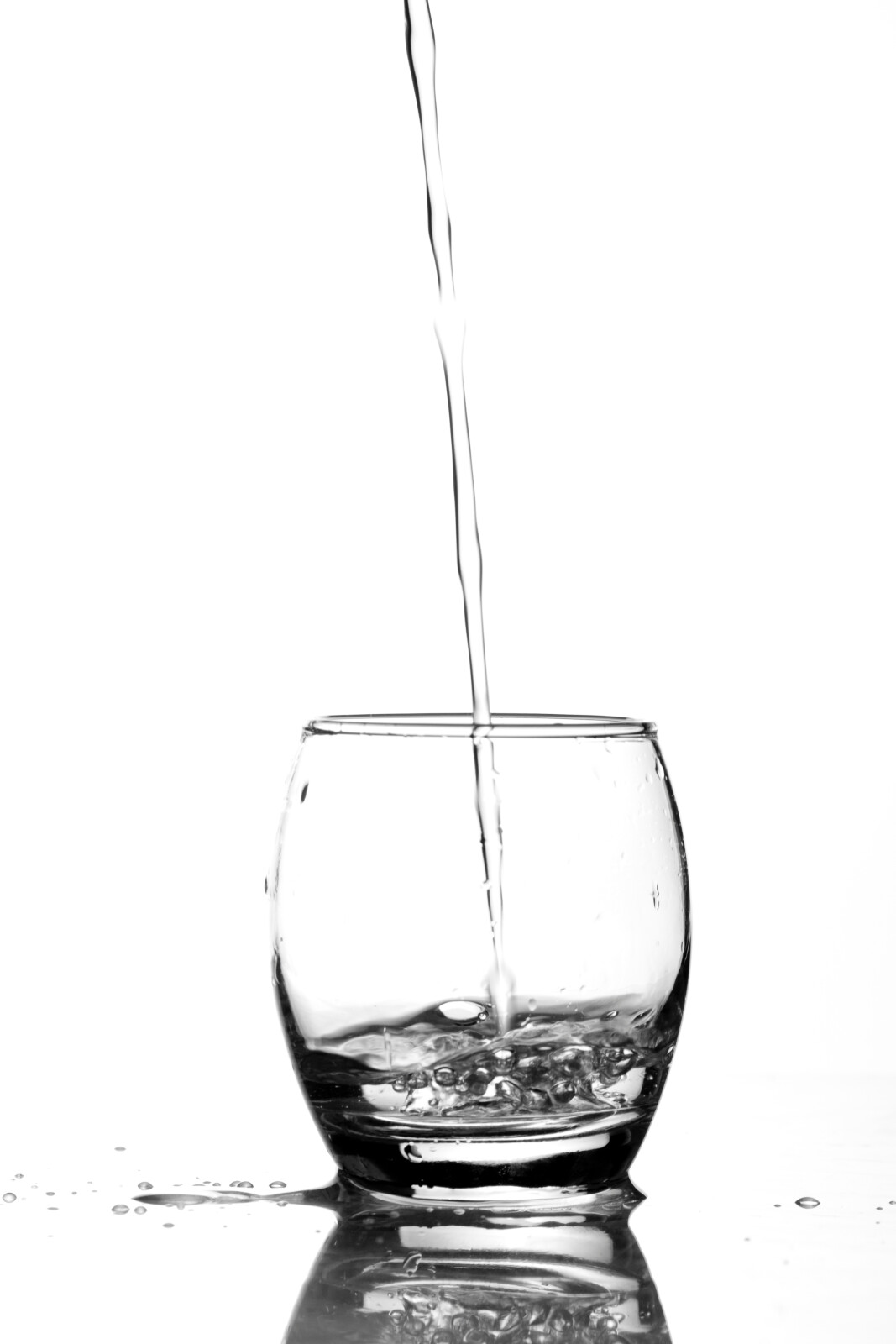
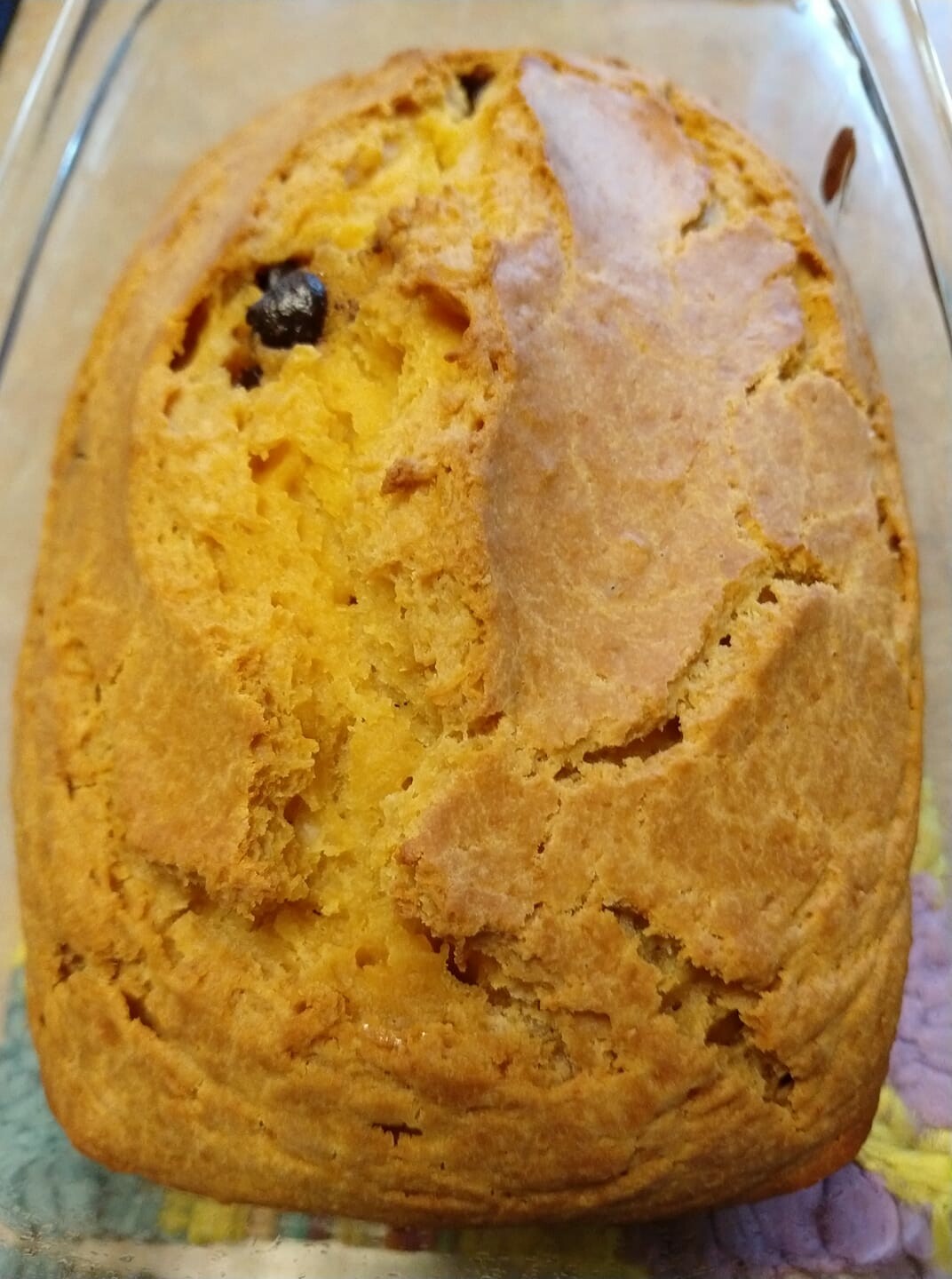
INGREDIENTS
⅓ cup melted coconut oil
½ cup honey or maple syrup
2 eggs
1 cup pumpkin purée (a small pie pumpkin usually yields around 4 cups -- how to cook a pumpkin)
¼ cup milk of choice or water
1 ½ teaspoons pumpkin spice blend (or ½ teaspoon cinnamon, ½ teaspoon ground ginger, ¼ teaspoon ground nutmeg, and ¼ teaspoon allspice or cloves) OR 2drops cinnamon bark, 1 drop nutmeg, 1 drop ginger, and 1 drop clove essential oils (make sure you're using a pure, food-safe one -- ask me about what I use!)
1 teaspoon baking soda
1 teaspoon vanilla extract
½ teaspoon salt
1 ¾ cups white whole wheat flour or regular whole wheat flour or Einkorn flour
Optional: ½ cup mix-ins like chopped walnuts or pecans, chocolate chips, raisins, chopped dried fruit…
Pinch of ground cinnamon, for sprinkling on top
1. Preheat oven to 325 degrees Fahrenheit (165 degrees Celsius) and grease a 9×5-inch loaf pan.
2. In a large bowl, beat the oil and honey together together with a whisk. Add the eggs and whisk until blended. (If your coconut oil solidifies on contact with cold ingredients, simply let the bowl rest in a warm place for a few minutes, like on top of your stove or in the preheating oven.)
3. Add the pumpkin purée, milk, pumpkin spice, baking soda, vanilla and salt, and whisk to blend. Lastly, switch to a big spoon and stir in the flour, just until combined. Some lumps are ok! If you’re adding any additional mix-ins, gently fold them in.
4. Pour the batter into your greased loaf pan and sprinkle lightly with cinnamon. If you’d like a pretty swirled effect, run the tip of a knife across the batter in a zig-zag pattern.
5. Bake for 55 to 60 minutes, or until a toothpick inserted into the center comes out clean (typically, if I haven’t added any mix-ins, my bread is done at 55 minutes; if I have added mix-ins, it needs closer to 60 minutes). Let the bread cool in the loaf pan for 10 minutes, then carefully transfer the bread to a cooling rack to cool for 20 minutes before slicing.
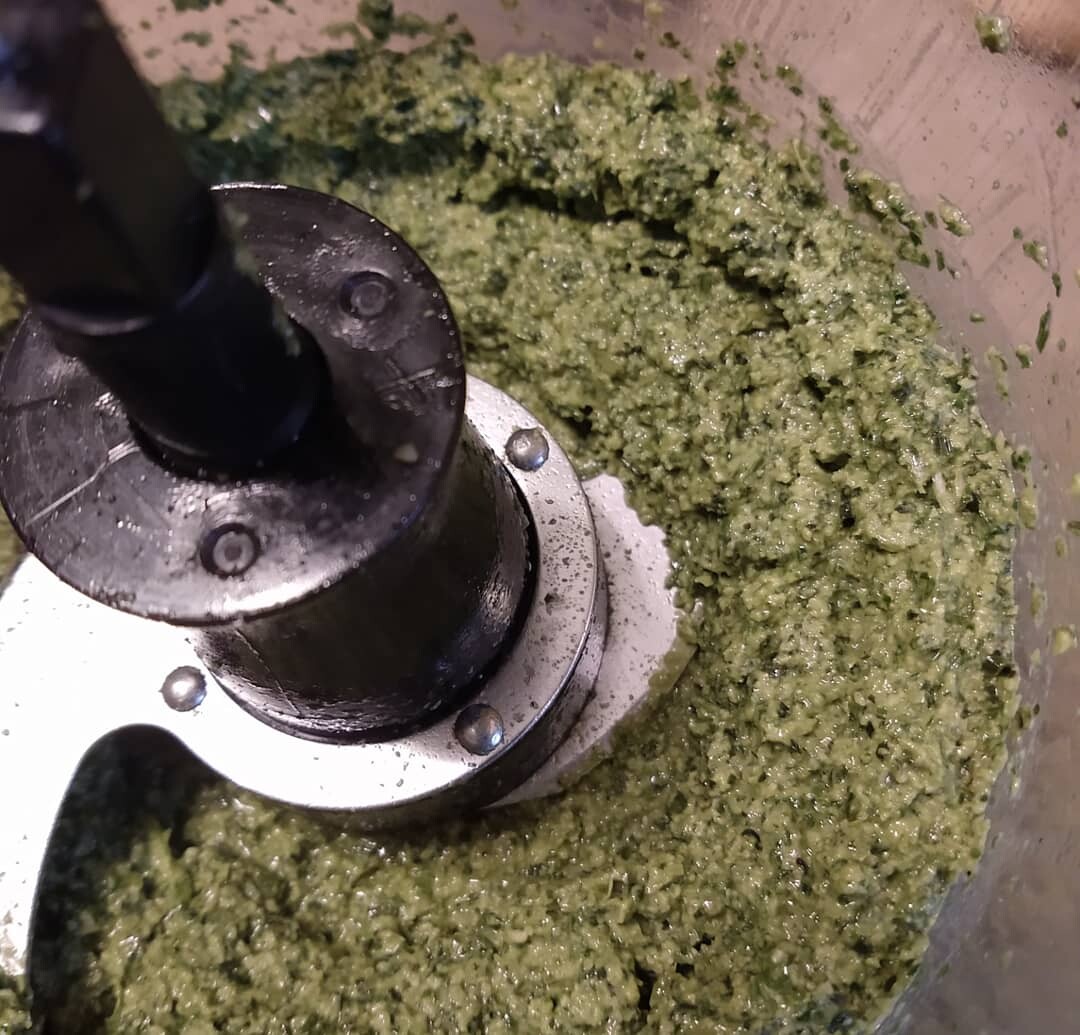 AfterHomemade Arugula/Basil Pesto
AfterHomemade Arugula/Basil Pesto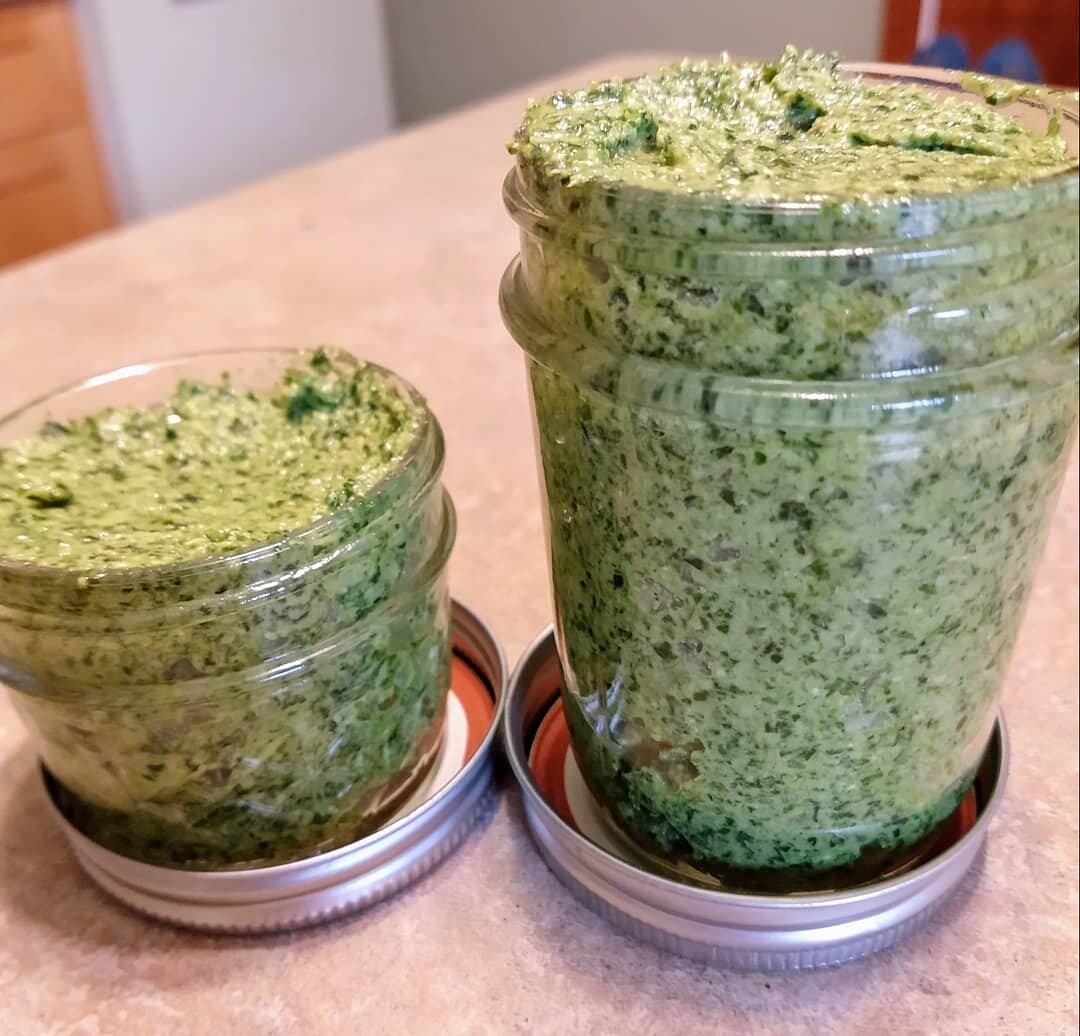 One to freeze and one to use this week.
One to freeze and one to use this week.Organic baby arugula
Organic basil
Pine nuts (you can also use walnuts, but I like being fancy 😉)
Hard-neck Garlic (9ish cloves)
Extra Virgin Olive oil
Pink Himalayan Sea Salt
2 drops black pepper vitality essential oil
3 drops lime vitality essential oil
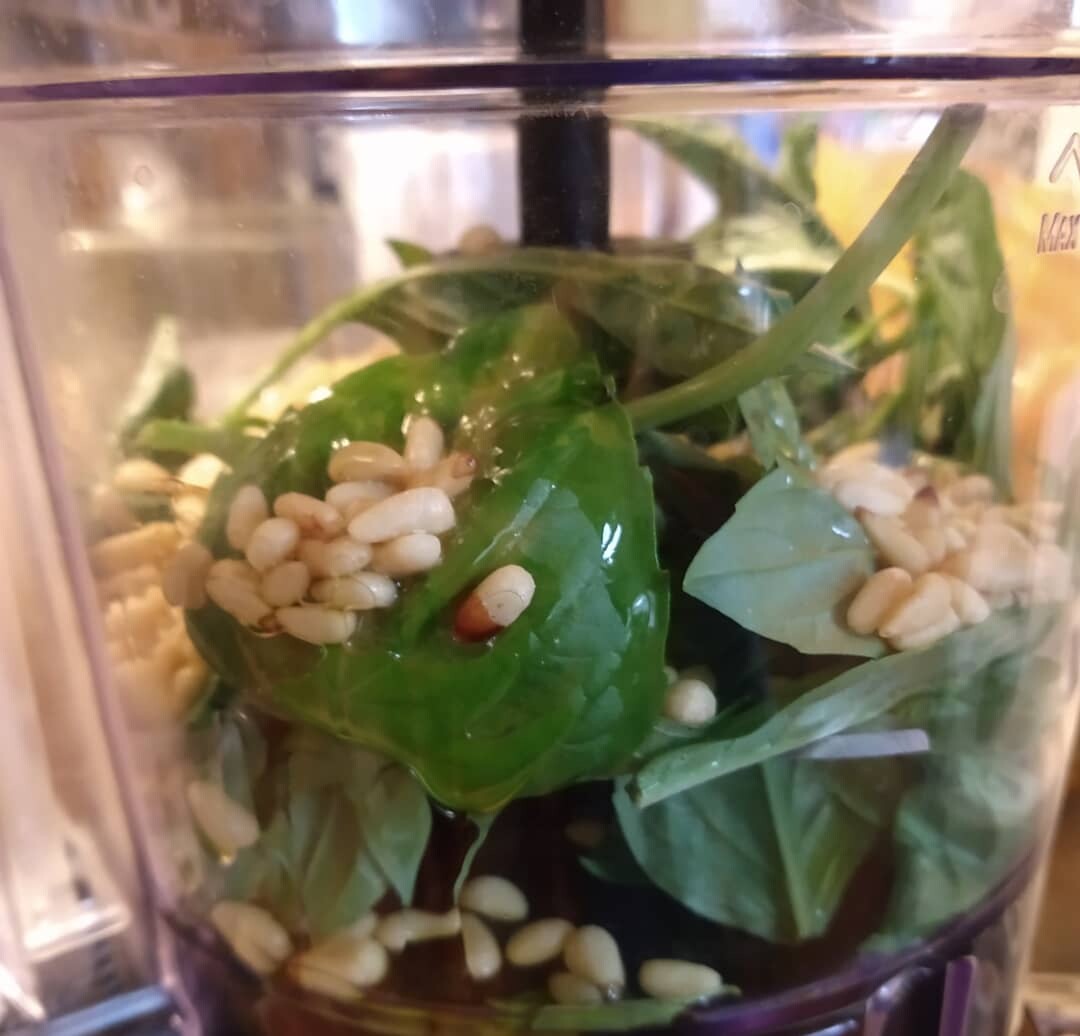 before
beforeIt is very important to know that not all essential oils are created equal...
You can’t just go out to a big box store (or anywhere online) and trust that you’re getting the good stuff. Lucky for you, I’ve got a source I trust. Contact me to learn more.
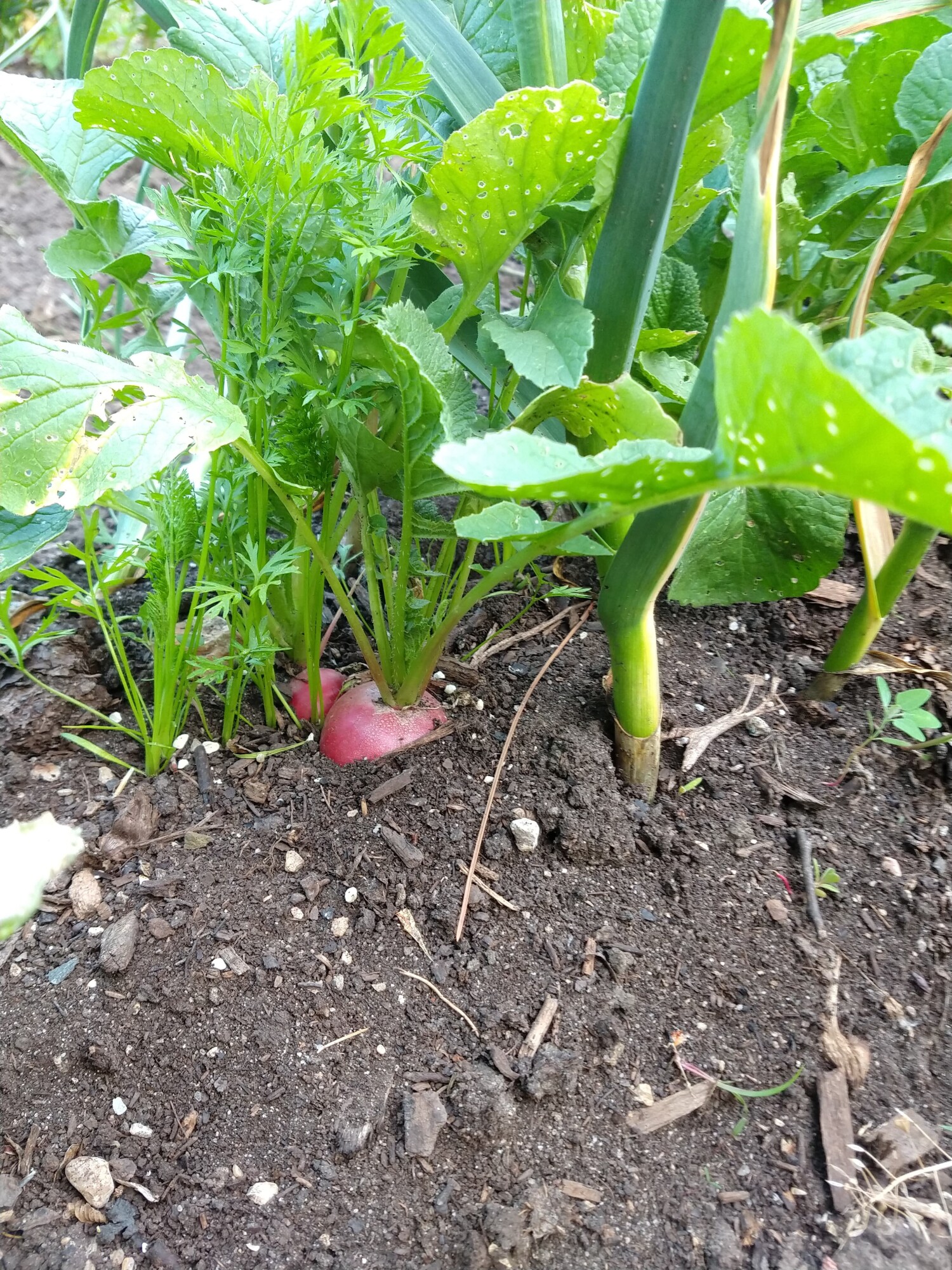
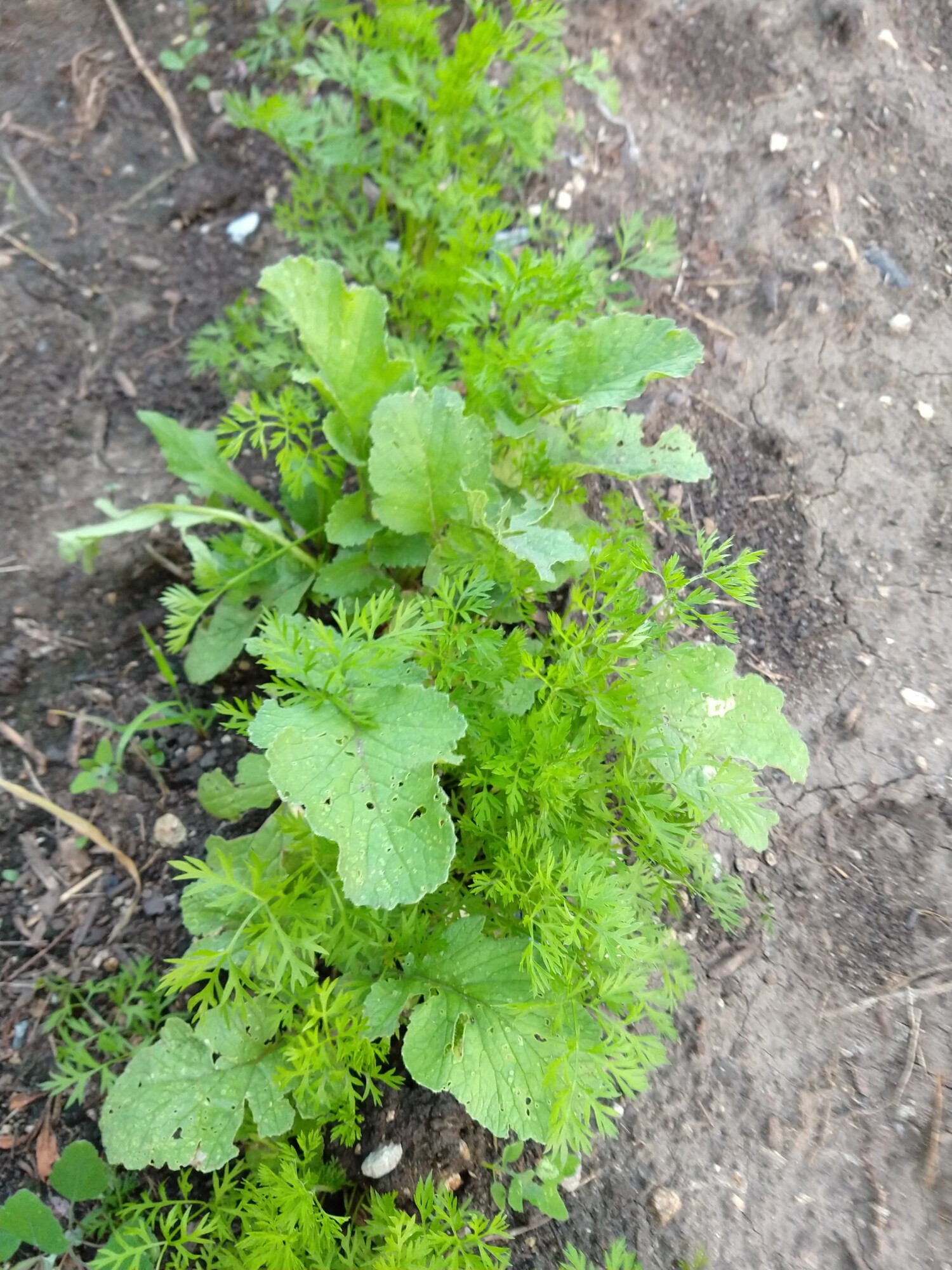 Fall crop of carrots/radishes planted recently without garlic.
Fall crop of carrots/radishes planted recently without garlic.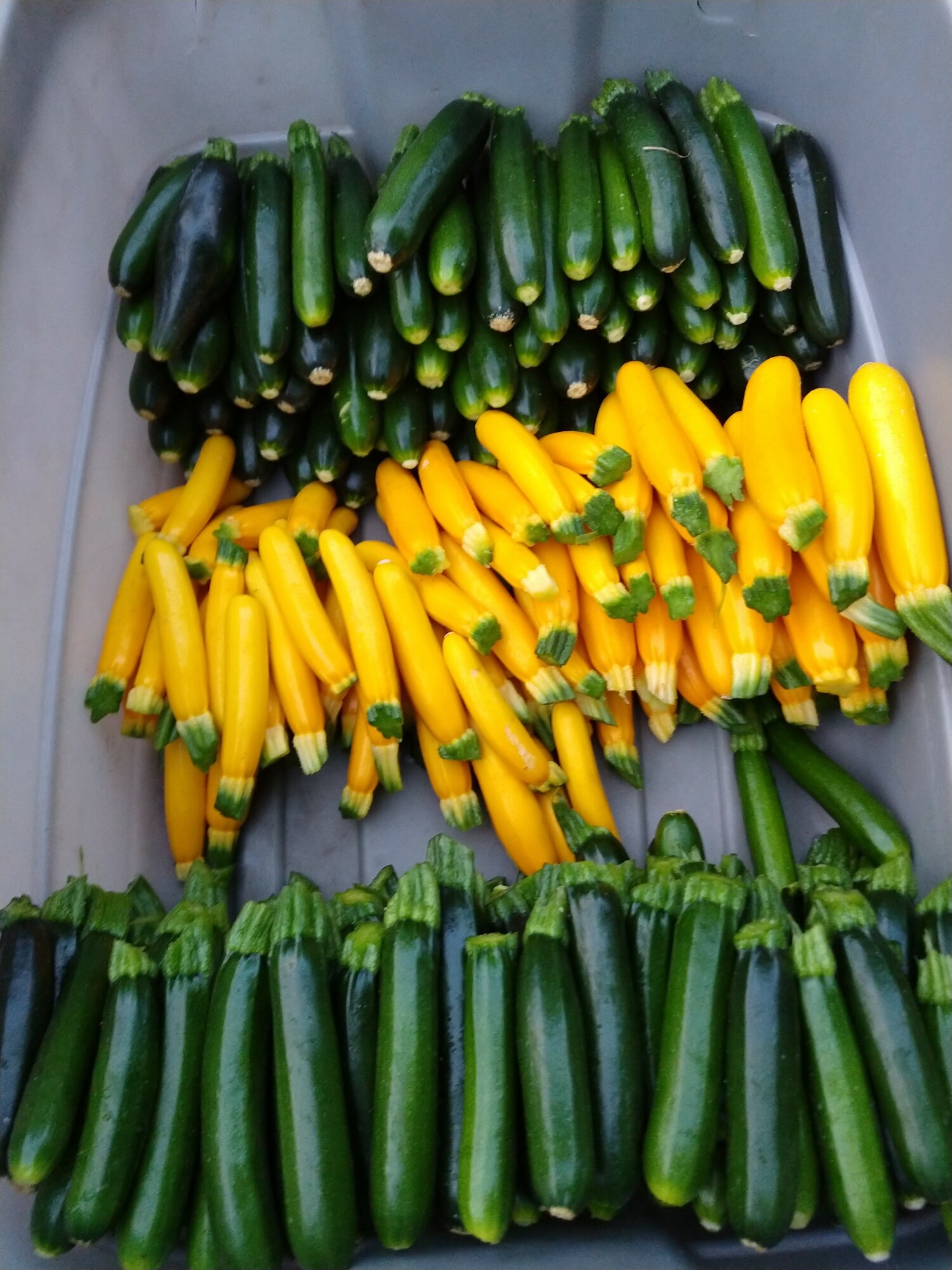 2nd crop of baby zucchini -- we pick 3x per week to get this size, otherwise we'd have a pick-up truck full of them!
2nd crop of baby zucchini -- we pick 3x per week to get this size, otherwise we'd have a pick-up truck full of them! 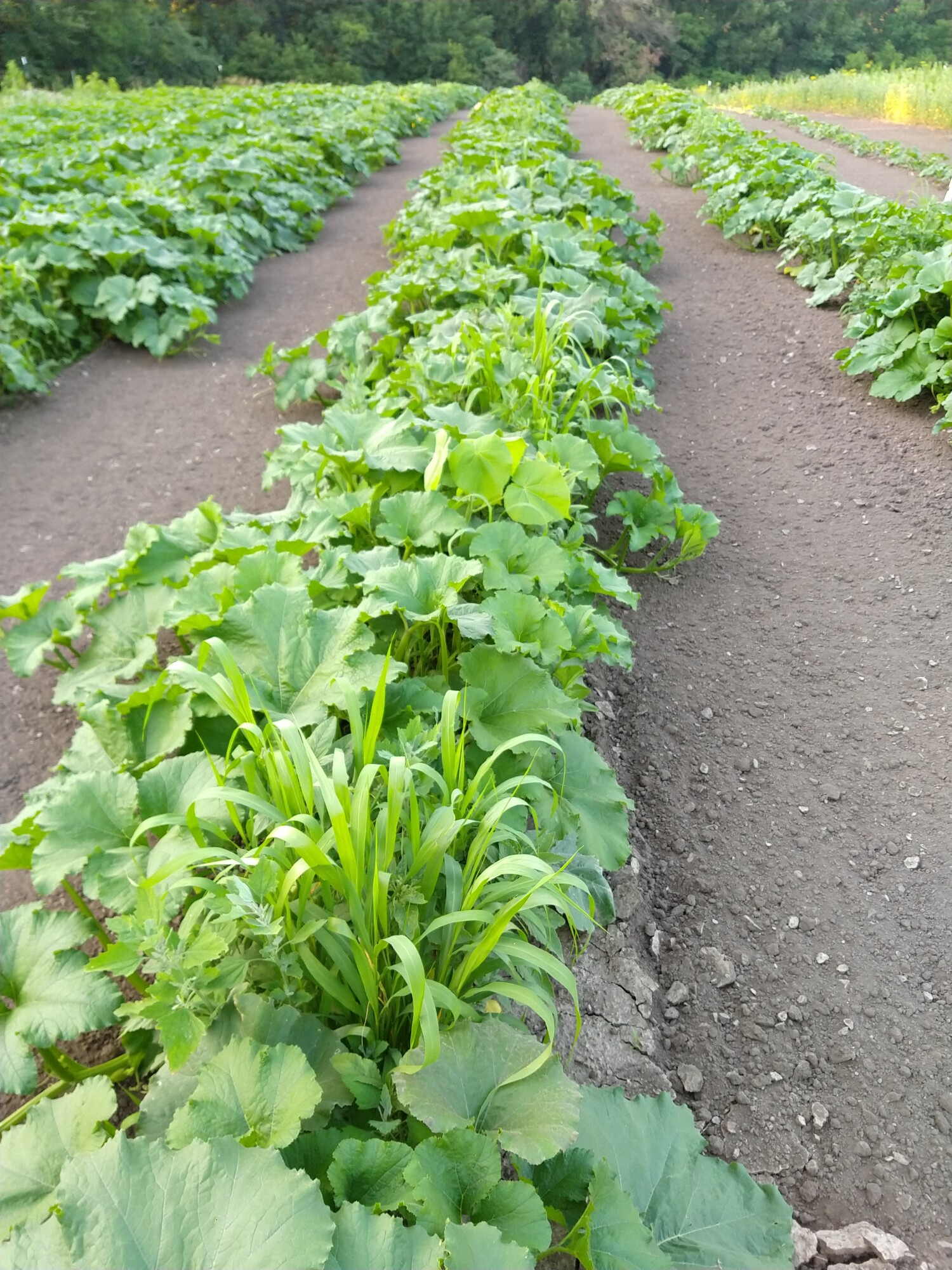 Pumpkin plants freshly tilled and about to run (they need to be hand-weeded still,
Pumpkin plants freshly tilled and about to run (they need to be hand-weeded still,don't mind the weeds)! ;)
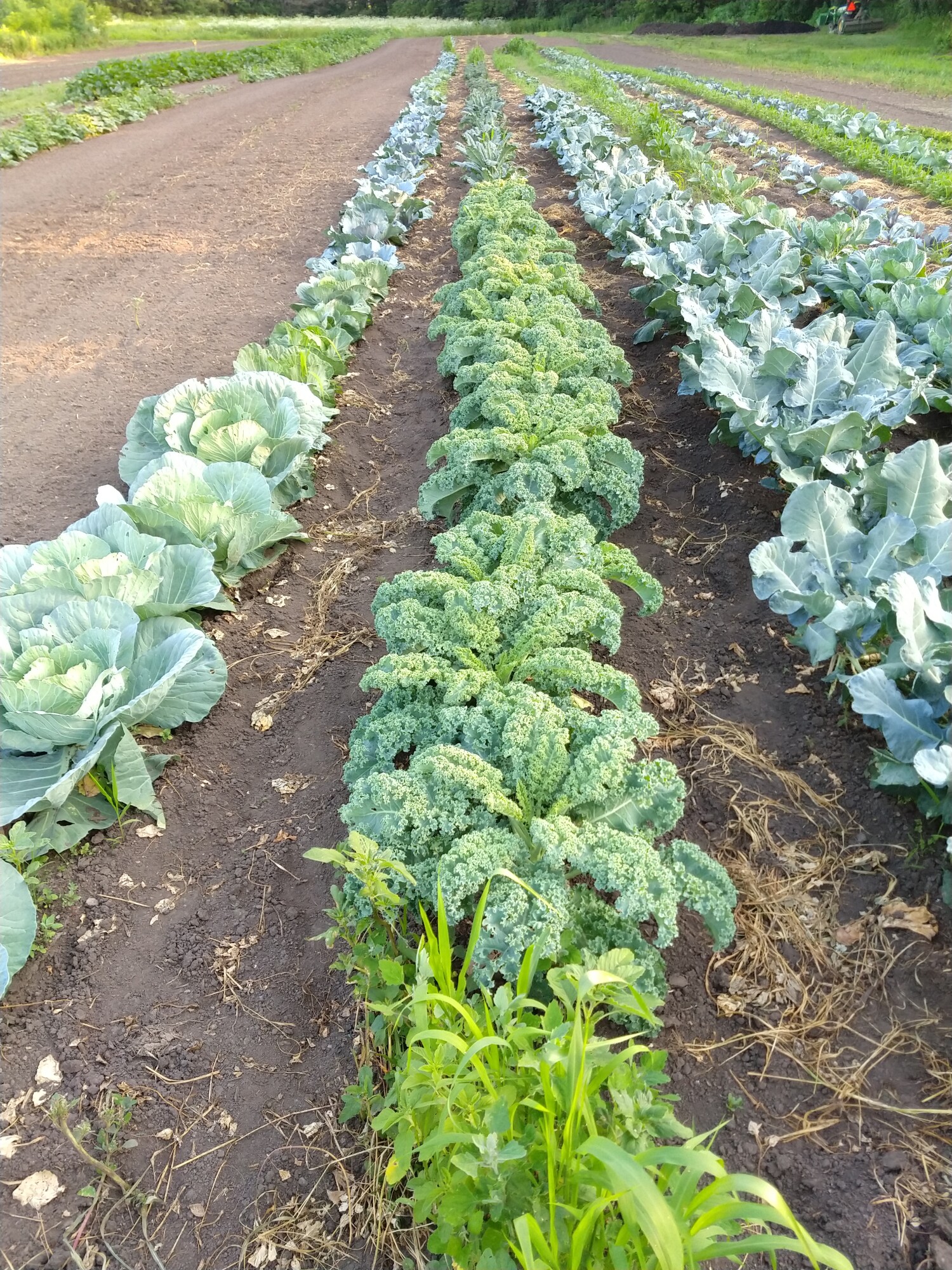 First planting of cabbage, broccoli, and kale.
First planting of cabbage, broccoli, and kale.You can see the zucchini too in the far top LH corner, and the cucumbers next to them. :)

2. We also see a specialized chiropractor, and utilize something that helps us stay in alignment longer. I wear a custom splint on top at night so I slide instead of clench, though I personally think that mostly just protects my teeth than stops clenching.
